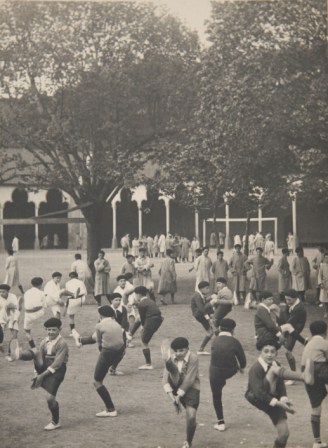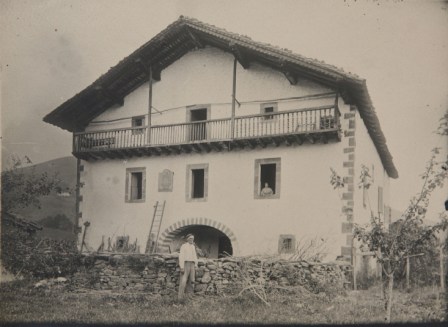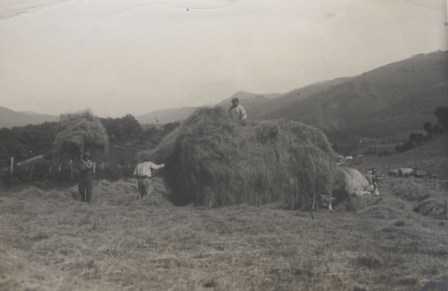5 June
Conferences
ON CULTURAL HERITAGE IN THE BAZTAN VALLEY
Photography in Baztan: From the cabinet of the high school of Lekaroz to the programs of study professionals.
D. Ignacio Miguéliz Valcarlos
Chair of Navarrese Heritage and Art
Although it is not possible to speak of photography in Baztan as something differentiated with its own characteristics with respect to the rest of Navarre or Spain, we will find significant elements for the study of this art in the valley. One of them is the establishment in Lekaroz of a Capuchin high school , which from the moment of its foundation includes a photographic cabinet. And next to it we see the establishment in Elizondo of Félix Mena, who opened a photographic studio at the end of the 19th century. We will also find that different photographers who worked in Navarre also moved to Baztan to take photographs.
The Capuchin high school of Lekaroz was founded by Fray Joaquín de Llevaneras in 1888, with a modern system of learning that will include different cabinets and workshops, physics, music, art, etc..., and also a photography laboratory . Thanks to this laboratory, at the head of which a Capuchin friar was placed, the first one being Friar Antonio de Antequera, Lekaroz compiled a very interesting photo library that collected the life of the high school from its beginnings, and that nowadays, Closed , is kept in the Capuchin convent outside the walls of Pamplona. Fray Tarsicio de Azcona already made a review of this photographic library, dividing its collections into different categories according to their subject matter. In this way, the images preserved include the religious life of the convent, with photographs of Father Llevaneras, as well as of other Capuchins, among them the missionary promotions sent to the Carolinas and other missions of the order. Another important nucleus is made up of shots of high school itself and its facilities, which to a certain extent served as a promotional image of the convent. There follows a background referring to the daily life of the high school and its inmates, including photographs of the annual group of students and teachers, as well as of the graduating classes according to the different branches, and also of the schoolchildren in relation to the daily classes and moments of relaxation, which include excursions to different places in the valley and outside it, such as Biarritz, for example. Finally, there is a very interesting collection of images of Baztan, of the work in the fields and the daily life of its inhabitants, and of the buildings that populate it, with special attention to the farmhouses.

Students of the high school of Lekaroz dancing. 1910
(Photo library of the Capuchins. Pamplona)

Bizarranea, Azpilkueta
(Photo library of the Capuchins. Pamplona)

Reapers
(Photo library of the Capuchins. Pamplona)
Opposite this photographic workshop, we find in 1887 the establishment of Félix Mena Martín in Elizondo, where he opened a photographic studio, a continuation of the one he already had in Pamplona, and which through his successors has survived to the present day in the persons of his great-grandchildren. Mena transferred to the Baztan the uses and customs of the cabinets of the capital, repeating the same subject of shots. Thus, we find studio portraits, which will evolve at the same pace as the photographic technique, but also reports of social and documentary subject that will collect the day to day of the valley, its traditions and its most important events, such as the popular dances in the squares of the villages, the celebration of bullfights or a very interesting report on the floods suffered by the valley in 1913.
Along with these two programs of study we find other photographers established in Baztan, such as Francisco Etxenike, at the beginning of the century, or Xabier Landa, nowadays, owner of an interesting collection of Navarrese photography, as well as images collected by other photographers who visited the valley in their tours around Navarre, such as the Marquis of Santa María del Villa or Nicolás Ardanaz.
